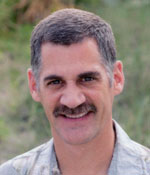
I didn’t really grasp the finer points of crosswind landings until I was an instructor pilot in the T-38. Yes I had been trained in Cessna 152s and Air Force T-37s, but my many hours in the F-15 lulled me into not worrying about crosswinds so much. We landed the F-15 in a crab through touchdown, then raised the nose to 13 degrees of pitch to give us aerodynamic braking. The maximum recommended crosswind limit is 30 knots, and the flight manual suggests using crosswind landing procedures by limiting the aerobrake to 10 degrees of pitch for crosswinds above 25 knots. Even near its empty weight of 29,000 pounds, the F-15 just doesn’t want to flip over in a crosswind. This meant that almost every landing in the F-15 was “normal.”
 I did have one exciting landing at night in the F-15 where the crosswinds jumped up to 35 knots on the island of Okinawa and we just didn’t have the gas to go anywhere else. Looking out the side of the canopy on final approach was a bit nerve wracking, and I did apply crosswind controls on short final to limit the crab angle on touchdown. Once on the ground, normal crosswind controls kept me aligned with the runway and allowed me to slow down safely.
I did have one exciting landing at night in the F-15 where the crosswinds jumped up to 35 knots on the island of Okinawa and we just didn’t have the gas to go anywhere else. Looking out the side of the canopy on final approach was a bit nerve wracking, and I did apply crosswind controls on short final to limit the crab angle on touchdown. Once on the ground, normal crosswind controls kept me aligned with the runway and allowed me to slow down safely.
The T-38 is also landed in a crab, but with an empty weight of 9,000 pounds it is more affected by crosswinds, especially during the aerobrake. We used crosswind landing procedures in the T-38 at a lower crosswind limit of 15 knots. Unfortunately for me, as a new instructor with only two months of experience, I didn’t consider the need to apply crosswind controls for crosswinds less than 15 knots. On one particular student sortie the crosswinds were steady at 14 knots. The student did an excellent landing and got into a full aerobrake just as expected. But then the unexpected happened. In the blink of an eye our right wing rapidly rose up, placing us only on our left main wheel and putting our left wingtip dangerously close to the ground. I rapidly applied full right aileron as I lowered the nose, and we were soon rolling as a tricycle.
With that incident still burned into my memory, it is now ingrained in me to use crosswind controls all the time—during taxi, takeoff, landing, and taxi back. I used to think of landing as two phases—before touchdown and after touchdown. But as far as crosswind controls go, if someone is only watching your aileron inputs during landing (and not looking outside), they should not be able to tell when you touch down because your application of aileron should gradually increase as you slow down, regardless of when you actually touch down.
Since most of us are flying airplanes between 1,000 pounds and 5,000 pounds, we are even more prone to wind problems than the 9,000-pound T-38. Just a few weeks ago, a Cessna 172 wound up upside down while taxiing to takeoff at a local airport. The NTSB preliminary report says the winds were gusting to 43 knots. Most flight manuals list a maximum demonstrated crosswind component, but not much else for your consideration in whether to taxi, take off, or land. At the Air Force Academy, we had guidance for the Diamond DA40 of maximum wind for takeoff (26 knots), maximum wind for landing (35 knots), and maximum wind for taxi operations (35 knots). We should all have our own limits for the airplanes we fly.
Larry Brown of Colorado Springs, Colo., is a retired Air Force F-15 pilot who is using the lessons he learned as a fighter pilot as a GA pilot in his Cessna P210. Brown, who has 2,600 hours total time during his 32 years of flying, also was an instructor pilot and flight examiner in the Air Force T-38 and instructor pilot in the T-52, the military’s version of GA’s Diamond DA40. See previous installments in the Fly like a fighter archive.



